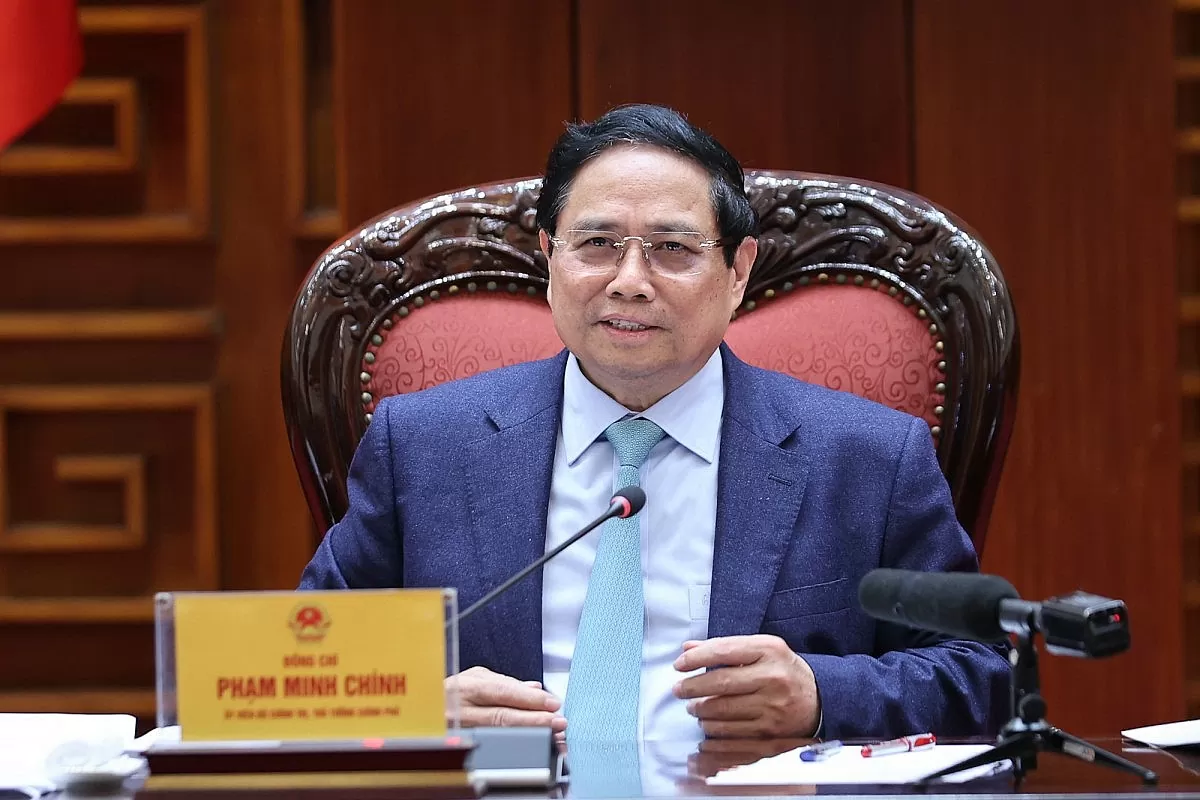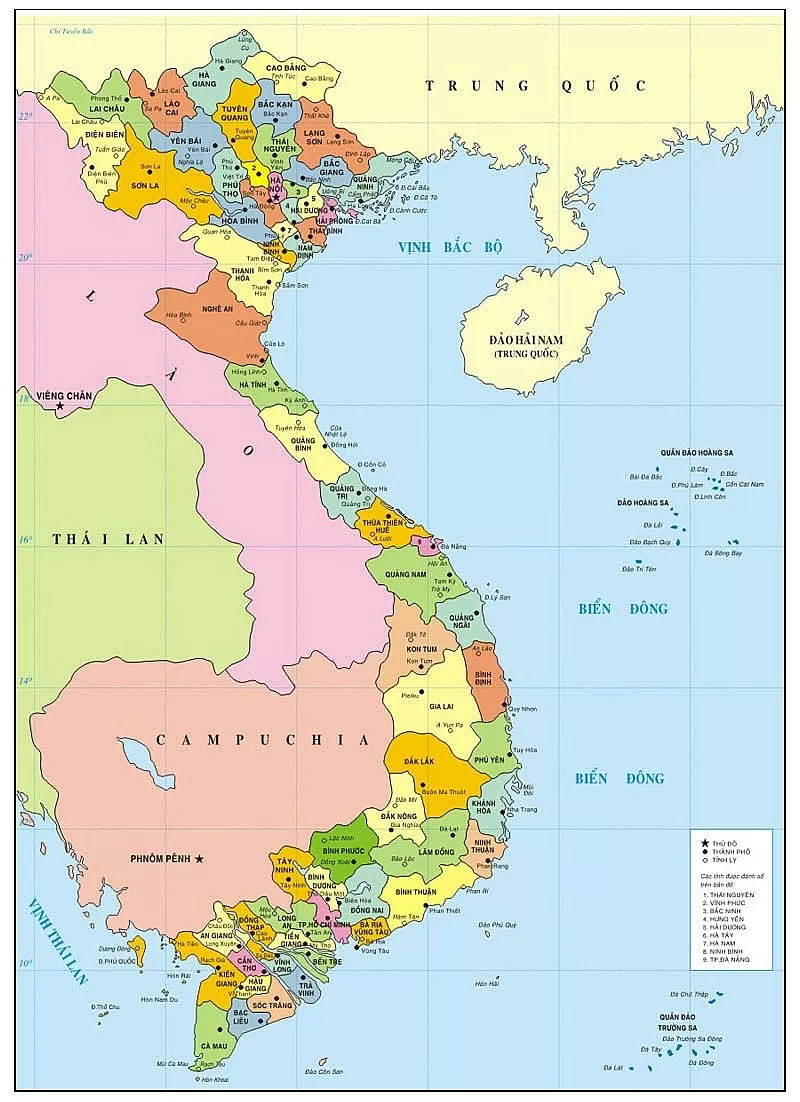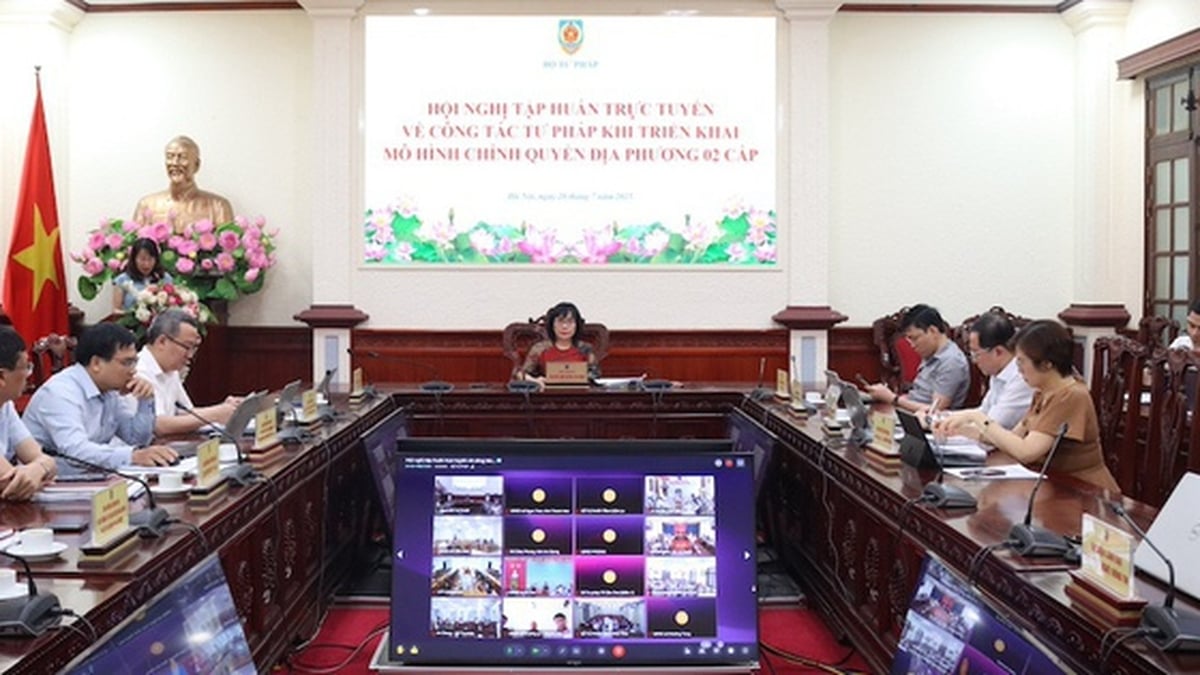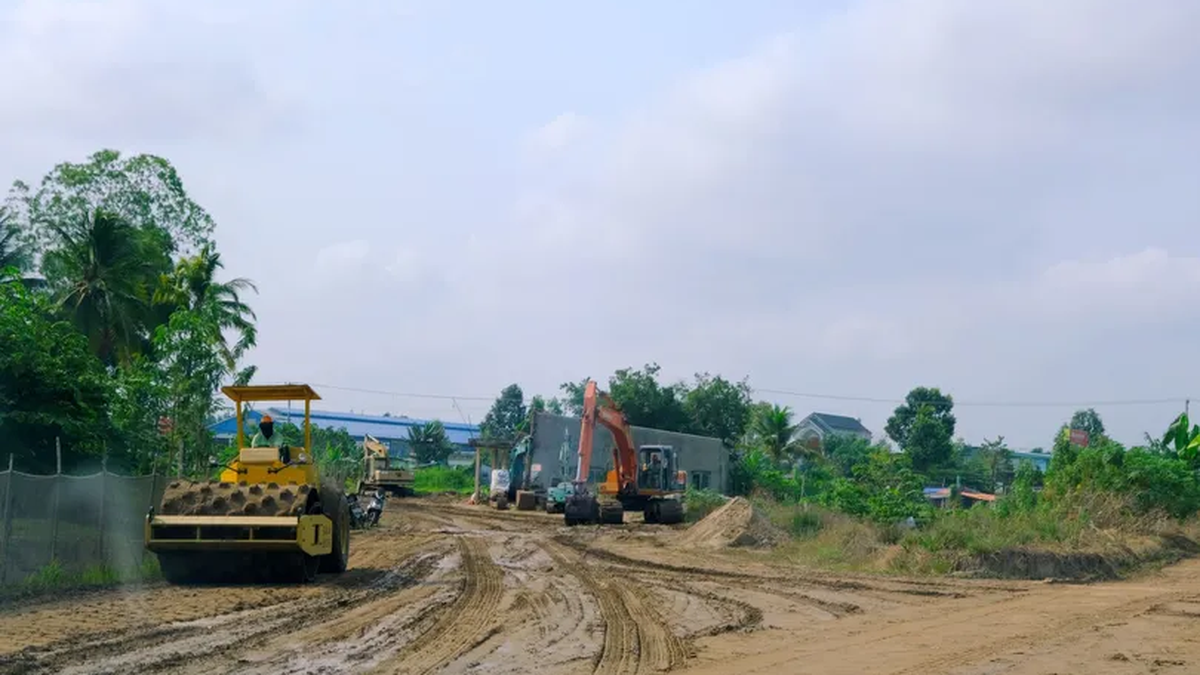The policy of the Politburo and Secretariat on merging provinces, eliminating district level, and expanding commune level received much consensus as well as comments on this matter.
Many major tasks are central and urgent.
Building a project to merge some provincial-level administrative units, not organizing at the district level, and continuing to merge commune-level administrative units is one of the contents stated in Conclusion No. 127-KL/TW dated February 28, 2025 of the Politburo and Secretariat on implementing research and proposing to continue to reorganize the apparatus of the political system.
 |
| Bac Kan is a province that does not meet all three minimum standards on area, population, and number of district-level units. |
In particular, for the provincial level, in addition to the basis of population size and area, it is necessary to carefully study the national master plan, regional planning, local planning, socio-economic development strategy, industry development, expansion of development space... as the basis and scientific basis for arrangement.
At the meeting of the Government Party Committee Standing Committee on the afternoon of March 5, the Government Party Committee Standing Committee agreed on a two-level local government model, namely the provincial level (including provinces and centrally-run cities) and the grassroots level.
Secretary of the Government Party Committee and Prime Minister Pham Minh Chinh emphasized that the arrangement of provincial-level administrative units needs to be based on a number of important criteria, namely area, population, economy, culture and the ability to complement and support each other for development.
 |
| Party Secretary and Prime Minister Pham Minh Chinh emphasized that the arrangement of provincial-level administrative units should be based on a number of important criteria, namely area, population, economy, culture and the ability to complement and support each other for development. Photo: VGP/Nhat Bac |
Previously, at the regular Government meeting on the morning of March 5, Prime Minister Pham Minh Chinh pointed out many major and urgent tasks. In particular, the Prime Minister requested that we first focus on completing the project to rearrange the boundaries of administrative units according to the direction of the Politburo to submit to competent authorities.
The direction emphasized by the Government leaders is to merge some provinces to expand provincial boundaries in accordance with criteria, conditions, circumstances, historical and cultural traditions; not to organize at the district level; to reduce focal points to expand the scale of the commune level.
At the same time, the Prime Minister requested proposals to amend, supplement and perfect relevant legal documents.
Get support, agreement
According to Conclusion 127-KL/TW, the Politburo requested that the provincial merger plan be completed no later than tomorrow, March 9, and will be submitted to the Party Central Committee before April 7, 2025.
Currently, Vietnam has 63 provincial-level administrative units, 705 district-level administrative units and 10,595 commune-level administrative units. Thus, in the future, when the Politburo and Secretariat's orientation on merging some provinces, not organizing the district level and continuing to merge communes is implemented, some signs indicating border markers between provinces may change and some names of provinces will no longer exist.
 |
| Administrative map of 63 provinces and cities of Vietnam |
Many opinions expressed agreement with the direction of merging provinces, not organizing district-level governments, and continuing to merge communes of the Central Government and said that there is no reason to continue maintaining a cumbersome administrative apparatus as it is now.
“This policy of the Politburo is very necessary, I fully support it,” Dr. Vo Kim Cuong - former Deputy Chief Architect of Ho Chi Minh City - expressed his opinion on the policy of merging provinces of the Politburo when talking to reporters of Cong Thuong Newspaper.
He analyzed that currently, Vietnam is divided into too many small provinces. For example, a provincial party secretary is in charge of a locality with about 1 million people, but when they move up to the Central level, their vision will have to be 100 million people. Obviously, the organizational gap between the Central level and the provinces is too far. Therefore, the establishment of provinces of a certain size to narrow the organizational gap between the Central level and the provinces is necessary.
In fact, this is not the first time that a province has been merged, Dr. Vo Kim Cuong said, the biggest advantage in the province merger is the determination of the Politburo in the revolution of the organizational apparatus. Along with specific solutions to turn determination into action, a fundamental factor that needs to be mentioned is political stability.
Giving his opinions on the reform of the apparatus streamlining, specifically the merger of provinces, Dr. Vo Kim Cuong said that it is necessary to build a system of criteria first as a basis for the merger, not just stopping at the issue of area and population. In building these criteria, it is necessary to answer two questions: What do the people want and need from the State? What are the needs of state management?
According to him, regarding the state, the administrative level mainly implements the law, so how to serve the implementation of the law well is important. Therefore, it is necessary to build a state of law, the rule of law, where people and businesses are completely based on the law and are free to do what the law does not prohibit. The legal system needs to be streamlined and most convenient, based on that to merge provinces.
On the part of the people and businesses, it must be clarified that when merging provinces, where do businesses and people want to approach the State and how? Currently, there is a very favorable point that all people's matters are resolved by the commune and ward governments. Institutional reform requires that matters related to the people be resolved by local governments. At that time, we will be able to reduce the district level and merge the provincial level.
“The construction criteria need to answer the questions: What do people need? Where are state management agencies and how can businesses access state management agencies?”, he said.
Another criterion mentioned by Dr. Vo Kim Cuong is the cultural and historical factor. According to him, each province and each locality has different cultural traditions, therefore, it is impossible to use the name of a locality to name the newly merged province, but only to give it a new name.
“We come up with a completely new name and close the old name, so that the traditional culture of the merged locality is still preserved and not confused or lost,” Dr. Vo Kim Cuong shared and said: Cultural tradition is extremely important. The people's hearts are also there. Merging many provinces together will have a cultural exchange and harmony as well as the unique features of the merged locality. The name of the old province can also be used to name a few places in the newly merged province/city to preserve and remind many generations of the cultural features and traditions of the locality.
“When researching the merger of provinces at this time, many people think that it is necessary to consider the factors of adjacent localities with similar cultures. However, in my opinion, it is necessary to set out criteria for what constitutes cultural similarity. For example, between Quang Ngai and Binh Dinh or between Quang Ngai and Quang Nam, I see that there are many things that are closer to each other between Quang Ngai and Quang Nam, and the accents are also more similar,” said Dr. Vo Kim Cuong.
Merge the provinces to continue development. Therefore, we should not be too strict about customs and practices. According to him, we need to consider all three criteria: people's interests, culture, and convenience in state management.
“We are entering a new era, so we need to consider a new way of governance. Therefore, it is necessary to reorganize and merge the provincial level,” Architect Dao Ngoc Nghiem, Vice President of the Vietnam Urban Planning and Development Association, shared and emphasized: This is a big issue, so we need to consider 3 factors: Legal basis; synchronization of criteria and must be supported and agreed by the people - this is a very important factor.
According to Mr. Dao Ngoc Nghiem, cultural and traditional factors are very important, avoiding the case of a region being a cultural site but being separated into two, which will be difficult to accept. Or, the choice of a new province name must also be associated with cultural and traditional factors and must be agreed upon by the people.
Experts also stated that, in the current conditions, streamlining the apparatus and eliminating intermediate levels is not only an administrative task but also a historical requirement. A compact apparatus that operates efficiently, effectively and effectively will serve people and businesses better, helping the country to break through faster in the new era - the era of prosperity and happiness.
According to the regulations of the National Assembly Standing Committee, the standards of a province or city include population size, natural area and the number of administrative units at the district level. For provinces, the minimum population size must be 900,000 people or more (mountainous and highland provinces); for non-mountainous and highland provinces, it must be 1.4 million people or more. Regarding area, the minimum standard for a province is 5,000 km2 or more; for mountainous and highland provinces, the area standard is higher, 8,000 km2. The minimum standard for the number of district-level units is 9 units or more, including at least 1 city or 1 town... According to the above standards, as of 2023, 17 provinces do not meet the minimum population standard of 900,000 people, 28 provinces do not meet the minimum natural area standard, and 14 provinces have the number of district-level administrative units below the standard of 9 units. |
Source: https://congthuong.vn/sap-nhap-tinh-khong-nen-ghep-ten-mot-cach-co-hoc-377343.html






























![[Photo] National Assembly Chairman Tran Thanh Man visits Vietnamese Heroic Mother Ta Thi Tran](https://vphoto.vietnam.vn/thumb/1200x675/vietnam/resource/IMAGE/2025/7/20/765c0bd057dd44ad83ab89fe0255b783)



































































Comment (0)